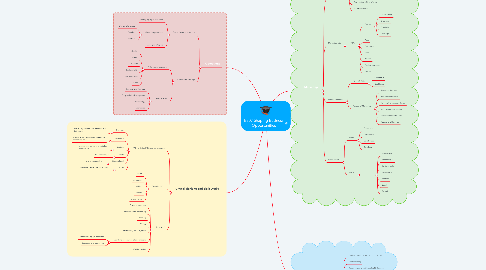
1. Operations
1.1. Operations management
1.1.1. Managing Input resources
1.1.2. Managing processes
1.1.2.1. Design of process
1.1.2.2. Planning
1.1.2.3. Improve
1.1.3. Managing Outputs
1.2. Operations strategy
1.2.1. Performance objectives
1.2.1.1. Quality
1.2.1.2. Speed
1.2.1.3. Flexibility
1.2.1.4. Sustainability
1.2.1.5. Dependability
1.2.1.6. Cost
1.2.2. Decision areas
1.2.2.1. Capacity and facilities
1.2.2.2. Supply chain development
1.2.2.3. Technology
1.2.2.4. Workforce
2. Critical Thinking and Skills Audit
2.1. Why is Critical Thinking so important
2.1.1. Evaulate
2.1.1.1. Make judgements about the value of information
2.1.2. Synthesise
2.1.2.1. Combine information and ideas into something new
2.1.3. Analyse
2.1.3.1. Make a methodical and detailed examination
2.1.4. Apply
2.1.4.1. Use knowledge
2.1.5. Comprehend
2.1.5.1. Have understanding
2.1.6. Know
2.1.6.1. Be aware, remember information
2.2. Critical thinking
2.2.1. Voice
2.2.2. Argument
2.2.3. Writing
2.2.4. Process
2.2.5. Enquiry cycle
2.3. Skills Audit
2.3.1. Time management
2.3.2. Reflection and Reviewing
2.3.3. Reading
2.3.4. Writing
2.3.5. Referencing and Plagiasim
2.3.6. Searching for sources of information:
2.3.6.1. Understanding your sources
2.3.6.2. Searching and evaluating
2.3.7. Working online
3. Marketing
3.1. Marketing Process
3.1.1. Organisation's mission, vision and values
3.1.2. Analysis of the market
3.1.3. Strategy selection
3.1.4. Formulation of the offering
3.1.5. Implementation
3.2. Marketing Mix
3.2.1. 7 P's
3.2.1.1. Product
3.2.1.1.1. Convenience
3.2.1.1.2. Shopping
3.2.1.1.3. Speciality
3.2.1.1.4. Unsought
3.2.1.2. Place
3.2.1.3. Promotion
3.2.1.4. Price
3.2.1.5. Process
3.2.1.6. Physical evidence
3.2.1.7. People
3.3. Market Research
3.3.1. Types of Data
3.3.1.1. Quantative
3.3.1.2. Qualitative
3.3.2. Process of Marketing
3.3.2.1. Research planning
3.3.2.2. Exploratory research
3.3.2.3. Refining the research design
3.3.2.4. Main research collection
3.3.2.5. Analysis & Interpretation
3.3.2.6. Reporting of findings
3.4. Environment
3.4.1. Micro
3.4.1.1. Customers
3.4.1.2. Competitors
3.4.1.3. Distributors
3.4.1.4. Suppliers
3.4.2. Macro
3.4.2.1. STEEPLE
3.4.2.1.1. Sociological
3.4.2.1.2. Technological
3.4.2.1.3. Environmental
3.4.2.1.4. Economical
3.4.2.1.5. Political
3.4.2.1.6. Legal
3.4.2.1.7. Ethical
4. Finance
4.1. Raising finance
4.1.1. Retained earnings and working capital
4.1.2. Debt factoring
4.1.3. Bank overdrafts and bank facility finances
4.1.4. Lease finance
4.1.5. Equity finance
4.1.6. Venture capital and private equity
